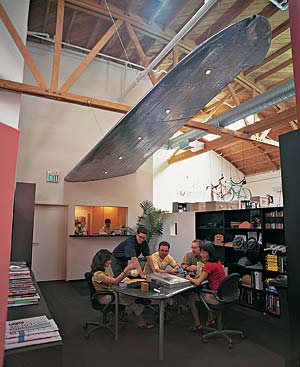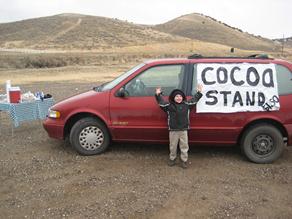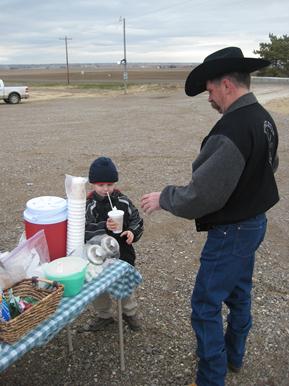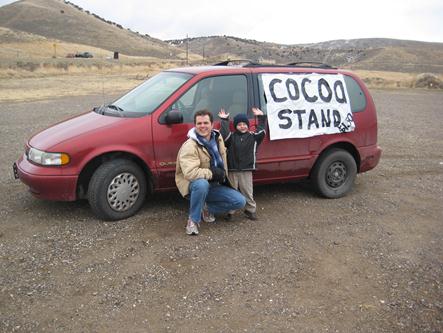Nov
15
VidAngel – now I can let my kids watch YouTube!
Filed Under Business Ideas, Resources, Principles, etc., Entrepreneurship, Technology | 2 Comments
Since 2009, I have spent a lot of time on YouTube (Orabrush and Poo~Pourri are the most notable YouTube marketing campaigns I helped launch) and I really love a lot of YouTube content. I know many top YouTubers personally and really like the people behind the content. Many of these great people grew up with different experiences than me or my kids and so they have a different value-set about language and content. There are so many YouTube videos that I would just remove one cleavage shot, one f-bomb, or one other clip in order to share with my young kids. There are a lot of really talented people on YouTube that I want to share, but I refrain to avoid introducing language and content that young minds really don’t need to think about.
In 2011, when YouTube launched their javascript embed API, I started toying with ideas to build something cool on YouTube.
About July of last year (2012), my brothers and I were in the office talking and they said how much they’d love to have a streaming service that would skip/mute content the way some DVD players were outfitted over the last 10 years. None of us buy DVDs anymore and there is no solution for our streaming content. At that moment, a light bulb went off in my head, “hey, I could build that on YouTube’s API and Google Play opens up Hollywood’s library for a streaming service!” I decided to see if I could get the concept working at nights. Within a month we had a very rudimentary prototype and my brothers were tagging my favorite movies. Even in its early state, I loved the product.
A year later, after endless hours of legal research, programming, business plans, and prepping a way more robust product, my brothers and I launched VidAngel, family FILTERS for Movies and YouTube. What I am most excited about is that VidAngel will allow anyone to filter a web video from their own home. They don’t have to wait for us to do it, they and the community can do it themselves and share it with others, for FREE (we pay people to help us tag the Hollywood content and we charge for that, but free YouTube content is free). This is the service I’ve wanted for the last 4 years and now I’m so excited to make it a reality. I’m also excited for all the people and resources that are turning up to help us in this massive effort to clean up YouTube and Hollywood for families (thanks to ABC4 for covering us on TV the first day of our presale campaign – my handsome brothers are pictured in their interview).
Imagine the serendipity I felt when Google launched Chromecast a few months back and I overnighted the device to my door. I was elated to learn that, with some work, we could take VidAngel to the HDTV.
VidAngel is a massive undertaking; we’re one week into this and we’re barely getting started. Many thanks to those who have joined us early in this effort. Let’s make streaming video family-friendly!
Nov
21
Kickstarter versus Indiegogo versus Amazon (Lockitron style) – Tracking
Filed Under Entrepreneurship, Technology | Comments Off on Kickstarter versus Indiegogo versus Amazon (Lockitron style) – Tracking
At Orabrush, we decided to crowd-fund our next product, the Orapup (Bye Bye, Bad Dog Breath). We researched our options and concluded that Kickstarter was the best option because of the size of their network. However, after trying to reach out to their management, we learned that they wouldn’t approve our project.
We then opted for Indiegogo, whose team helped us figure out how to setup our campaign the way we wanted to.
We were thrilled that Indiegogo has a better tracking system than Kickstarter. As of when we researched in August, this is where Indiegogo surpassed Kickstarter, who only gave aggregate statistics.
Here’s a hint, every Indiegogo user is assigned an id. When any user shares, they get ?a={their-id} appended to the end of their link. Indiegogo then tracks the link in their database. What’s more, Indiegogo gives the number of visitors, funders, and total contributions of every participating user in the campaign owner’s dashboard.
We used that data to test the effectiveness of all of the traffic we sent to Indiegogo. It helped us evaluate the effectiveness of our marketing channels. Very helpful.
Yet, our conversion rates were not nearly as high as we experienced on our own website for Orabrush.
So, as our Indiegogo campaign ended, we launched Orapup.com preorders similiar to Lockitron (with Amazon). Using Amazon as checkout increased our conversion rates significantly (like over 60 percent as I recall). Between that and optimization of our website, we’ve raised more in the last month ($75k) than we raised in 64 days on Indiegogo ($62k).
Indiegogo
If you want to track multiple marketing channels, A/B test, and optimize your conversion process and you don’t have any development resources, I recommend using Indiegogo because of their tracking capabilities.
Kickstarter
If you have a project that has Kickstarter appeal (you have to be participating on Kickstarter for a while to understand which projects have appeal), it may be worth the loss of more accurate tracking for the network effect.
NOTE: I see lots of projects launched on Indiegogo and Kickstarter and they get absolutely no traction except from their closest friends or family. If you don’t have a network or audience to jumpstart your campaign, projects like Bugasalt (that seem to take off on their own) are the exception. Even Bugasalt had to get enough traction to attract links to its video from reeddit and publicity from ABC Nightline.
We found that on Indiegogo, our network was the reason for over 90 percent of the sales.
Own Preorder System
If you have development resources and you have your own audience, creating your own preorder system provides much more control. Also, using Amazon for our checkout, we were able to generate higher conversion rates. This is how we would do it from the beginning if we did it again.
Technical Note:
I spent a lot of time trying to figure out how Lockitron set up their preordering system. I finally called Amazon. Either the Amazon employee was clueless or didn’t want me to know how to set it up. The person I talked to said it had something to do with the restock date in the API. That was a dead end.
At any rate, I did a ton of digging to figure out how to set up the campaign. It’s called Amazon Flexible Payments. It was slick to set up and more affordable than the crowd funding fees of 9 percent. What’s more, you get the authorization but you can wait to settle until you ship, which can be more than 30 days in the future (could be a year in the future for that matter). Here’s a great write up on Amazon FPS.
But I wouldn’t go for your own preorder website just because the fees are less, I would do it most because you can control the conversion funnel better.
Conclusion
We will definitely crowd-fund a new product in the future because of what we learn from the marketplace in advance of shipping our product. However, after this time through, we concluded that doing it ourselves with a reputable payment provider provided better return than trying to launch on the two most popular crowd-funding sites.
UPDATE 3/12/2013
We collecting our preorders now and I had to build out a number of tools to take care of things I thought Amazon FPS would take care of automatically (collection on cards that had expired, failed, etc). Between the time we launched and now, Lockitron made their code open source as SelfStarter. Then CrowdTilt launched a hosted version of SelftStarter called Crowdhoster. I would check those out rather than building your own system.
Sep
28
True Ventures Founders Camp
Filed Under Business Ideas, Resources, Principles, etc., Entrepreneurship | Comments Off on True Ventures Founders Camp
Returned at 1:30am this morning from San Francisco and the True Ventures founders camp, which I thoroughly enjoyed.
Especially dinner with Abinash, Ben, Toni, Dave, and Zach.
I love being around entrepreneurs because they have an insatiable desire to learn. Otherwise, they cannot succeed. The market has a way of humbling you and making you constantly strive to learn. I love this environment.
State of the Valley
John Callahan opened the camp and talked about the state of the startup world in Silicon Valley. He said that there is a lot of seed capital, but very little B and C round capital. It’s going to be a tight time for seed startups for the next 12 months. (Note: if you’re struggling to find talent, make lots of connections with the startups because stats say that 60 percent of them will become available in 6-12 months)
Interestingly, in 2011, we introduced ourselves with a small handful of companies (maybe 4-7, I can’t remember). This year, there were 39 new companies! That reflects both the growth of True Ventures and the state of the seed market. Only the hotest companies are going onto B and C right now.
True Ventures has invested over 100 million in the last 12 months and the companies have created over 500 new jobs 
Finally, one of my favorite take-aways from the camp was a session by Sean Ellis (from Qualaroo) on how to determine if you’re ready to scale. Or, better said, how to get ready to scale. Sean has a post called the Start-up pyramid that is a high-level version of his session.
Qualaroo – Sean Ellis
- Build desire
- Reduce friction
Experiment
- combos of hooks and promise
- address conversion issues
- front load aha moments
Goals
- Smooth path to must-have UX
- Max % that reach experience
- What is the primary benefit that you have received? (multiple choice – is step 2)
- Why was the benefit important? (open ended survey)
- User testing (live or online)
- Query to correlate action to long-term engagement
- Survey with activity filter
- by event – what have they done?
- by lifecycle – how long have they been doing it?
- Product/Market Fit
- Optimize Conversions
- Optimize Macro/Micro Engagement
- Maximize LTV
Net Promoter Score – big brands? A mistake for startups, he thinks. He invests in the NPS companies that are not overpriced.
Jul
14
UVEF Top 25 Under 5
Filed Under Entrepreneurship | 1 Comment
I’m sitting at the UVEF top 25 under 5 award ceremony and I’m listening to John Pestanna, co-founder of Omniture, speak on the opportunity in model trains especially in the down economy.
- #25 EcoScraps – compost systems
- #24 bambooHR – simplifies HR process
- #23 izatt – iPhone and iPad apps / milebug is a top seller
- #22 Zylun – provide access to offshore work force
- #21 Launch Leads – gets leads for other businesses
- #20 Bluehouse Ski company – sponsor local skiers
- #19 Omnia Alliance – marketing management tools
- #18 Avantar – local mobile search – Pay for Performance
- #17 ClearCenter – IT of distributed teams in small company environments.
- #16 DrivingSales.com – collect business intelligence and market data across the automotive industry
- #15 Professional Cable – data connections for the Internet?
- #14 Orabrush – that’s us

- #13 Job Match – iApplicants solutions
- #12 SweetToothFairy – nailed QVC
- #11 CFOWise – ton of clients
- #10 BizVision – creating, managing and delivering webcasts for corporations
- #9 KT Tape – for treating and supporting sports injuries.
- #8 mediaFORGE – transforming online advertising based on previous browsing and shopping behavior
- #7 Fiftyfilms, LLC – My girlfriend’s boyfriend
- #6 Experience Dental Studio – great smiles.
- #5 SEO.com – was #6 last year.
- #4 Campus Book Rentals – 50-80 percent discount on textbook rentals. Saving students millions.
- #3 qivana – dietary system to stabilize and revitalize their health. All natural products.
- #2 simply mac – apple specialist
- #1 Orange Soda – online marketing with a fiz
Last time I attended this an MLM called Xango won.
May
7
Collaborative Offices – the d.school and IDEO
Filed Under Business Ideas, Resources, Principles, etc., Education and Love for Learning, Entrepreneurship, Ideas and Thoughts | 2 Comments

Great article from fast company on the Standford d.school – ditching the cubicles and going for project based work spaces. The d.school’s grand opening was today. Thanks to Mike Levinthal’s help on Orabrush, Jeffrey and I met William Burnett in their open conference room a few weeks ago and Professor Bernard Roth gave us a tour of their building. The kinds of projects they’re working on were fascinating (pumps for under $20 to change a community for example).
The students we interviewed to help us with product design were all extremely high caliber people and product designers. Very difficult choice.
Dave Kelly, who’s a schoolmate of Mike’s, also gave us a tour of IDEO. The culture of those organizations really opened our eyes to an incredible way to set up offices. I loved how they hung their bicycles from the ceilings (sounds like the tree houses we built as kids). Thanks to Kathleen (Dave’s assistant) for helping set the interviews up for us!
We’d like to recreate something similar at the Provo Town Square or some other place with character for Orabrush. If you know of any places in the area that we could do something creative with, we’d love to know.
Mar
8

I asked many on LinkedIn.com and here on my blog to contribute ideas to improve my young aspiring entrepreneur’s chances over his toy sale a few years ago. He had decided that his project for this year would be to sell something again. We really appreciated all the ideas.
Ultimately, we talked about where to go for heavier traffic in the country and realized that most skiers heading to the Pomerelle Ski Resort pass right near our home. We requested permission from the farmer who owned the field (happened to be my uncle) and set up at the base of the Albion grade.
We started with market research. My boy called Pomerelle to ask how much they charged for hot cocoa. Mid-conversation he hung up the phone and exclaimed, “ONE DOLLAR AND FIFTY CENTS FOR ONE CUP!!”
He and I searched the Internet for good recipes and he went to town with his Mom to purchase the ingredients. The cups and lids were harder to come by as they were sold in 600 to 1000 packs on the web and would run over 100 dollars together. Too risky. Luckily, when we attended a cousin’s reception, he asked the owner of the Sweetheart Manor in Burley if he could buy a few cups. He grinned from ear to ear when he walked away with 60 cups and lids for free, a donation to young entrepreneurship.
We all decided that 3-5pm, when the night skiers were headed up and the day skiers were headed down, would be the best time to sell. As repetition would catch those who drove by repeatedly, we planned to sell for 2 hours every Saturday in February.
The signs, which were made out of silage plastic, required more work than we thought they would, but they showed up very well and were strong enough to leave outside for the month.
I was impressed with how much he grew over the four weeks. He went from standing their quietly waiting for someone else to initiate the conversation, to jumping up and down to get people’s attention as they drove by.
He also learned, after selling mostly regular chocolate cocoa, that he could get more people to purchase his Strawberry Valentines cocoa if he encouraged them by saying, “this one is my most favorite in the whole world.”

At the end of the month he made $90.59 total revenue and spent $26 on supplies, so he brought home $64.59 to split between his capital for the next sale, his savings, his mission fund and his tithing. He was thrilled, and so were my wife and I.

Nov
11
What is your favorite child entrepreneur hero story?
Filed Under Business Ideas, Resources, Principles, etc., Education and Love for Learning, Entrepreneurship, Favorite Books, Ideas and Thoughts | 1 Comment
My son has become interested in business at a very young age (he’s 6 right now) and I would like to introduce him to inspiring stories of young entrepreneurs to give him ideas.
A little background. My son, of his own accord, has successfully sold his jokes by giving 1 for free and charging a $1 for more. He set up a toy sale out by the driveway at 5. He asks questions about the difference between Walmart’s and Apple’s margins. He hires his sisters (with his Halloween candy) to do work for him to make more money. This is a greater level of interest than his Dad for his age.
I want to encourage his interests in business and need some help.
We recently read of James C. Penny (founder of J.C. Penny) who set up a watermelon stand near the fairgrounds (his Dad scolded him for taking advantage of those within the fairgrounds who paid for selling permits). We read of Orville Wright and when he partnered with his 8-year-old sister to collect scrap iron from the neighbors and sell it to the junk yard (they had a bully attach them when they took the metal to the yard). Great stories.
This morning it occurred to me that if we could read together inspiring stories of young entrepreneurs, then it would give us both ideas.
Particularly, he wants to sell something this year for a project and has discovered from his toy sale (that only earned him $0.25 because he did it on a country road with little traffic) that he needs to find something he can sell and a place with more people to sell it. He needs ideas.
So, what are your favorite child entrepreneurial stories that my son and I can share together?
– Something a famous entrepreneur did when s/he was a child (famous examples).
– Something someone close to you has done that was interesting (non-famous examples).
– Stories you’ve heard as alternatives to the lemonade or toy stand (perhaps ideas that could work for a boy who lives in the country).
– Any children who’ve created very successful enterprises.
Please answer on LinkedIn, via a trackback from a post on your blog or in the comments. We’ll both be grateful!
Sep
11
Digital Content Markets Set on Fire
Filed Under Business Ideas, Resources, Principles, etc., Entrepreneurship, Ideas and Thoughts | Comments Off on Digital Content Markets Set on Fire
Mark Cuban’s recent post is extremely thought provoking and, as an avid Kindle fan/user since its launch, I believe he’s onto something for the content business. I’m saving the link here for future reference.
Sep
2
Pogopalooza Professional Big Air and Extreme Sport Awareness
Filed Under Business Ideas, Resources, Principles, etc., Entrepreneurship, Ideas and Thoughts | 1 Comment
A friend of mine from my very own Burley, Idaho, Biff Hutchison, just won the Professional Big Air competition at the Pogopalooza in Pittsburg. I’m thrilled for him.
When Paul Allen offerred to let the first 10 entrepreneurs who contact him to run a survey on his 50 million users, I took him up on it and decided to gauge the publics awareness of pogo as a sport.
Here are the results (I’m thinking these stats will look very different over the next year as I see this sport taking off).
I’ll post the final after all 1000 responses come in…
What do you know about pogo as an extreme sport? (1215 responses) September 2nd, 2009
| I want a FlyBar or other stunt pogo stick | 1% |
| I’ve heard of Pogopalooza | 4% |
| I know some punk kids who do tricks on pogo sticks | 4% |
| I don’t know anything about pogo as a sport | 90% |
| I have a family member who wants or has a pogo stick for stunts | 2% |
Here’s a plug for FamilyLink (thanks for the survey Paul!)…
If your business would like to run a targeted survey with our 50 million users, please contact info@admazing.com. We can provide hundreds of thousands of responses in a very short time period with demographic targeting.
Oct
4
Opportunity Knocks and it’s not Paulson’s $700 Billion
Filed Under Business Ideas, Resources, Principles, etc., Entrepreneurship, Freedom, Government, Politics, etc., Ideas and Thoughts | 1 Comment
Last week, as my blood boiled when I thought of the freedoms we might loose as a result of the $700 billion transfer of power to the secretary of the treasury, I found myself reading articles, trying to understand what was happening, learning whether I could make a difference. It felt like a worthwhile thing to do, after all, the future of our country was on the line.
Then I read Seth Godin’s post on looking for an opportunity to do less, which hit home for me. I decided to write and call my senators and representatives and then forget about the housing crisis. Stop reading the articles. Stop wasting my time on something I had no power over.
Instead, I spend my time on our company and my family.
In a conversation with a good friend, he spoke of how wonderful a time this is to start a company. As the job market softens it will be easier to attract good talent to your team. He recently spoke with a technical leader in a large organization. Their research suggests that their ability to hire new programmers is going to surge in two months, not because they will have more resources, but because people will be looking for the work. He also commented that competition is so worried about their our cashflow problems and margin pressure that you have a chance to really grow if you dig in and work.
It’s a marvelous time to build a business, attract talent, stay lean and provide value to society.
So, the only reading I will be doing is studying the previous financial crashes historically to understand where is the best direction to steer our business. Did you know that the movie business thrived during the Great Depression? People needed an escape during difficult times…so they went to the movies. There are silver linings on the darkest of clouds. I thank Seth for reminding me to look at mine.
Hope.
That’s what President Uchtdorf called it today. Just saying that word makes me feel better.
keep looking »